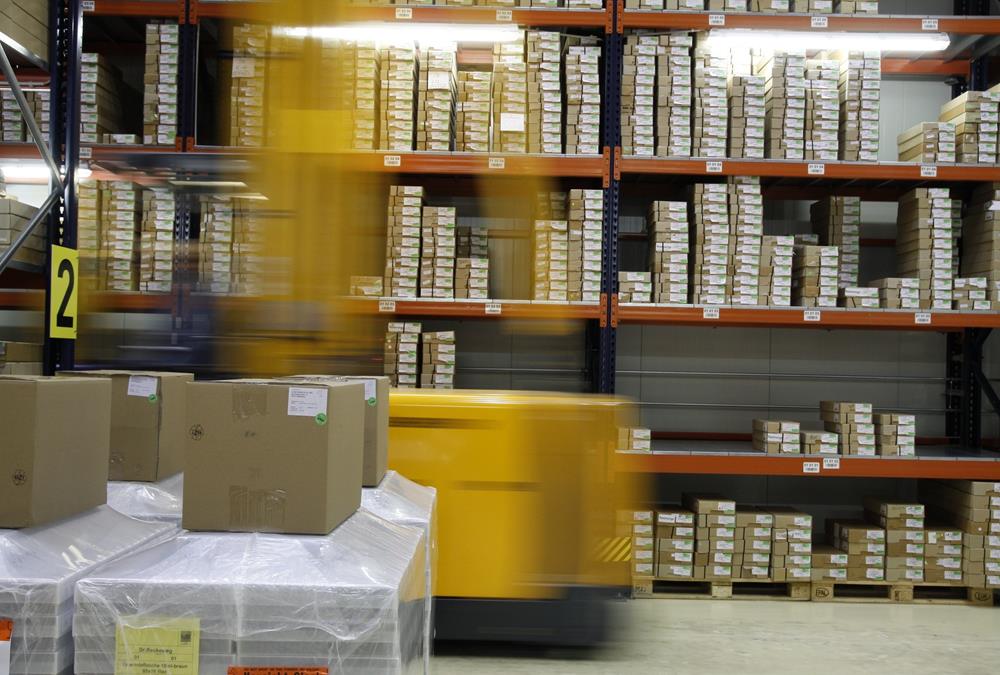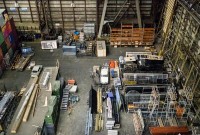- Home
- Business Processes
- Industry Knowledge
- Aerospace Industry
- Automotive Industry
- Banking Domain
- BFSI Industry
- Consumer/ FMCG Industry
- Chemicals Industry
- Engineering & Construction
- Energy Industry
- Education Domain
- Finance Domain
- Hospitality Domain
- Healthcare Industry
- Insurance Domain
- Retail Industry
- Travel and Tourism Domain
- Telecom Industry
- Leadership Skills
- eLearning
- Home
- Business Processes
- Order to Cash
- Warehouse Packaging Process
Warehouse Packaging Process
Before shipping, businesses need to make sure that the items will arrive in good condition. Packaging is a form of protection against environmental threats that the product will face from the time it leaves warehouse facility until the time it reached the customer. The packaging is intended to provide protection for the item as it is being handled in the warehouse or when the item is being shipped.
What is Packing?
Before shipping, businesses need to make sure that the items will arrive in good condition. Packaging is a form of protection against environmental threats that the product will face from the time it leaves warehouse facility until the time it reached the customer. The packaging is intended to provide protection for the item as it is being handled in the warehouse or when the item is being shipped. In this process, warehouse workers pick products from the storage locations and move them to a packing station where they check the item quantities and types, and assign them to appropriate containers. When a container is fully packed, they can close it and move it to the outbound docks, and the products are ready to ship.
Packing Process
The packing process allows you to validate and pack products into containers. Packing in a warehouse depends on the way the inventory is picked and the reference available to the packer. Packing also depends on the containerization process. Once an order is picked, it is handed off to a packer. The packer is responsible for securely placing the items in a box or poly mailer, adding in any needed packing materials, and putting a shipping label on it.
Packaging Product Dimensions
Before items can be stored or packed efficiently, warehouse management system need to understand and define packaging product dimensions for each of the product. Each dimension type provides a set of physical measurements (weight, width, depth, and height), and establishes the process where those physical measurement values apply.
Some examples of packaging dimensions are given below:
Storage Storage dimensions: are used along with location volumetric to determine how many of each item can be stored in various warehouse locations.
Packing Packing dimensions: are used during containerization and the manual packing process to determine how many of each item will fit in various container types.
Nested Packing: Nested packing dimensions are used when the packing process contains multiple levels.
Shipping Dimensions Shipping dimensions of the product may be different from actual, laid out dimensions. Shipping dimensions refer to the size of the item or package when it will be shipped. This may include extra padding or wiggle room required.
Packaging Types
There are different types of packaging that are used for finished goods; internal packaging and external packaging. The external packaging must be sufficient to protect the internal packaging as well as the finished item. The external packaging should have dimensions that allow a suitable quantity to be stored on a pallet most efficiently. Choosing the right packaging for a shipment depends on the products, the shipping method, and the destination. The right packaging method is the one that ensures that your product arrives in good condition for the lowest cost.
- By far the most common form of packaging is cardboard, also known as corrugated fiberboard or just corrugate. Corrugate is cheap, strong, and light, so it’s the perfect material for packaging all kinds of products.
- Some products can still get damaged if they move around inside a cardboard box, however. One solution is to add filler materials such as packing paper, packing peanuts, or bubble wrap.
- If the products you’re shipping are sensitive to moisture, there may be a need to use an anticorrosion coating, special wrapping, or moisture-absorbing packets.
- Electronic products are sensitive to static electricity, so these products require special protection against electrostatic discharge.
Packing Materials and Fees
Packing material fees are paid to vendor company based on per unit of weight, for each material that a packing unit consists of. Packing material weights and fees are calculated for sales order lines and purchase order lines. Packing Cost is calculated based on type of packing material and price of same for a specific period.
Related Links
You May Also Like
-
Overview of Warehouse Processes
The basic function of a warehouse is to store goods. This means that they receive deliveries from suppliers, do any necessary checking and sorting, store the materials until it is dispatched to customers. Traditionally warehouses were seen as places for the long-term storage of goods. Now organizations want to optimize their customer experience and try to move materials quickly through the supply chain, so the role of warehousing has changed.
-
Before shipping, businesses need to make sure that the items will arrive in good condition. Packaging is a form of protection against environmental threats that the product will face from the time it leaves warehouse facility until the time it reached the customer. The packaging is intended to provide protection for the item as it is being handled in the warehouse or when the item is being shipped.
-
Resource Planning is the process of planning for expected workload and determining the number of resources required to complete each activity in the warehouse. There are many types of warehouse positions, and they also vary by the employer, the scale of operations and location. Discussed here are generic positions applicable to warehouse management processes.
-
In the normal course of business, customers are likely to return orders from time to time due to various reasons and business should design processes the manage and accept such returns. A well designed returns management process can reduce costs and issues associated with returns or exchanges.
-
To stay competitive in today’s tough market, the location of your warehouse is vital. To grow retail business need to offer to customers faster and affordable shipping time, which is dependent on the warehousing location as the location of the warehouse affects the transit time to ship orders to customers.
-
The Outbound process starts with routing the shipments. The Outbound execution process starts from the point when pick tasks are completed for an outbound shipment and ends at the point where the outbound packages are loaded into trailers. The Warehouse Outbound process includes managing and controlling outgoing materials starting from the download of orders through to the shipping of products from the warehouse.
-
Inventory is money, and hence businesses need to perform physical inventory counts periodically to make sure that their inventory records are accurate. The traditional approach to conducting inventory counts is to shut down a facility during a slow time of year to count everything, one item at a time. This process is slow, expensive, and (unfortunately) not very accurate.
-
Types of Inventory Count Processes
While dealing with lots of inventory in a warehouse, lots of things can go wrong. Shipments may not have the right number of units in them, or they could get damaged somewhere along the supply chain. Discrepancies in the stock may arise as part of every inventory control, and need to be corrected immediately after the inventory control procedure has been finished.
-
Types of Order Picking Methods in the Warehouse
There are many different types of picking in a warehouse and each one works as a customized solution for each business. Depending on the size of your warehouse and inventory, the manpower you have on hand, and the number of customer orders made each day, there may be certain methods that are more efficient for you than others.
-
One of the most important decisions when running a warehouse is its layout. Warehouse layout defines the physical arrangement of storage racks, loading and unloading areas, equipment and other facility areas in the warehouse. A good layout aligned with the business needs could have a significant effect on the efficiency.
Explore Our Free Training Articles or
Sign Up to Start With Our eLearning Courses

About Us
Learning
© 2023 TechnoFunc, All Rights Reserved










